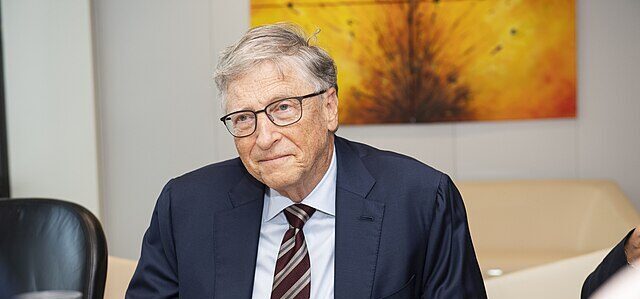Carmen Llanes still remembers the children under the slide.
In 2015, a community organizer working with her nonprofit, Go! Austin/¡Vamos! Austin, had gone to a child care center in the city’s southeast to meet with a teacher. It was late summer, and the organizer arrived to find the students sheltering beneath the playground’s slide. It was the only shade available.
The encounter symbolizes what has driven GAVA, which started as a childhood obesity initiative, to expand its work to address climate change and its many impacts in and around the Texas capital. What started with projects like playground shade structures and drainage systems grew into partnerships with climate researchers and funding from NASA. But it took years for the nonprofit to get on climate funders’ radar.
“We weren’t in any climate or environmental portfolios. We weren’t talking in that kind of language. But we were working on heat,” said Llanes, the group’s first-ever executive director, recalling those early days. “And now we’re doing sophisticated heat mapping with the Jackson School of Geosciences at [the University of Texas].”
The nonprofit’s evolution offers one example of the impacts of the Climate Funders Justice Pledge, which seeks to increase funding for BIPOC-led climate action, and last week celebrated two years since its launch. GAVA is precisely the kind of grantee with the potential to be a powerful force in the climate fight, but too often overlooked by green funders focused on a certain types of approaches. The group received critical early support from the Kresge Foundation, an early signatory to the pledge.
Since Donors of Color Network launched the campaign in 2021, 33 philanthropic institutions have signed on to its call to commit at least 30% of their climate funding to organizations led by Black, Indigenous and people of color or, at minimum, to transparency about their percentage. Even in that short time, leaders can point to progress on the ground and among individual signatories, tallying up $120 million in funding for such groups.
Still, forward momentum remains hard fought, with many large funders and wealthy tech donors notably absent. Signups to the pledge have slowed, with the anniversary marked by just one new member, Wallace Global Fund, which signed onto the latter portion.
“We feel like we’ve made tremendous progress, and there is ongoing momentum behind the pledge,” said Abdul Dosunmu, who manages the campaign. “At the same time, there is tremendous work yet to be done. There are still major funders that are on the sidelines looking in — and that has a deleterious effect on our ability, ultimately, to win in the fight against climate change.”
Examples of progress, excuses that “ring hollow”
What can GAVA tell us about the impact the pledge is having on the ground? The nonprofit is expanding its climate work thanks in part to funding from an original signatory, Kresge, which doubled down on an existing relationship with the Austin nonprofit with a three-year, $600,000 grant the year the campaign launched.
That award was one of a series of climate commitments by the Troy, Michigan-based grantmaker that has increased the share of its climate funding going to BIPOC-led groups from 33% in the two years preceding the pledge to 39% in 2022. While many foundations are dragging their feet on committing at all, including most top 40 climate funders, Kresge is not alone in making such a grantmaking shift.
Pisces Foundation, another inaugural signatory, has grown its segment of such funding from 17% to over 40%. Other, smaller funders have committed to expand their own climate grantmaking to BIPOC-led groups to at least 30%, including Meyer Memorial Trust (currently at 19%) and NorthLight Foundation (24%).
“A number of the excuses, and the wrangling, and the various suggestions that ‘it’s just not possible’ that we hear from other funders — those pretexts ring hollow when we see two major funders not only take the pledge, but successfully achieve the goals of the pledge,” said Dosunmu, referring to Kresge and Pisces.
The funders who have committed to the pledge, whether the full commitment or the transparency portion, now represent $120 million in annual funding if you tally up all their climate grants to BIPOC-led groups. While several funders’ commitments to equity in climate funding predate the pledge, the commitment serves as an ongoing accountability mechanism and a way to keep track of the field as a whole.
“Satellites, sensors, people”
Aside from illustrating the pledge’s value, GAVA’s climate journey serves as an example that backing climate science can go hand in hand with supporting the vulnerable communities closest to the problem.
Climate discourse and media coverage, including my own, sometimes implies that these are mutually exclusive philanthropic spheres — two separate types of climate work that need their own attention. Yet the nonprofit’s work with the University of Texas, a partnership that has brought it funding from NASA, the National Science Foundation and the National Oceanic and Atmospheric Administration, shows that BIPOC-led groups serving front-line communities can be integral to climate science.
In GAVA’s case, that involves residents attaching sensors to their cars in collaboration with researchers to collect on-the-ground data that can be combined with temperature readings collected at atmospheric levels. As Llanes puts it: “Satellites, sensors, people.”
As it looks to the future, the organization is moving into still more arenas that are not only new for it, but are often seen as outside the concerns of urban communities of color.
“This is not the sector we’ve been in, but it turns out that one of the most effective ways to mitigate flooding in southeast Austin” — one of GAVA’s primary areas of work — “is water conservation and land conservation in the hill country, 300 to 500 miles upstream of us,” Llanes told me.
The organization has already started to receive support for water and land conservation work, including from the Windward Fund, a funder collaborative.
Hubris and accountability
There is a growing list of billionaires who have written their first climate philanthropy checks since the Climate Funders Justice Pledge was launched in 2021, among them Mark Zuckerberg and Priscilla Chan, Steve and Connie Ballmer, and Laurene Powell Jobs.
Such newcomers have accelerated an ongoing takeover of environmental philanthropy by uber-wealthy donors, but none of the recent arrivals have yet added their names to the pledge list. In fact, only one foundation built on tech industry wealth — the sector producing most of these new megadonors — has taken the full pledge: Eric and Wendy Schmidt’s eponymous family philanthropy.
The campaign’s efforts to bring these new donors on board have met responses including total silence, “frankly, excuse-making,” and more genuine conversations, according to Dosunmu. He sees two main challenges.
First, many incoming donors are tech entrepreneurs with overwhelming confidence in themselves and their particular vision for climate philanthropy. “The hubris that they bring in from their success in other arenas ultimately colors their ability to engage as a good actor in this space,” he said.
Second, some question why funding such groups is not enough, and that they must also join the campaign. Dosunmu’s answer? Accountability.
“Some of these funders have actually, at least according to their public media, given more to BIPOC-led environmental justice organizations,” he said, without naming institutions. “They simply refuse to take the pledge.”
For the coming year, Dosunmu and his team have decided it’s time to move on from their charm offensive, during which they’ve carefully built personal relationships with key leaders behind the scenes. “We’re shifting a little bit from that catch-more-bees-with-honey approach toward a more aggressive stance, because we believe it’s an urgent, urgent moment,” he said.
Not only are the harms multiplying for those on the front lines, there’s a federal funding opportunity for communities of color thanks to the historic climate spending in the Inflation Reduction Act and other legislation. So the group is planning to raise the temperature, whether via social media, op-eds or other public forums.
“Calling out these funders is on the table,” he said. “Their failure to take the pledge is undermining the climate movement in this very critical moment.”
Credit:Source link



